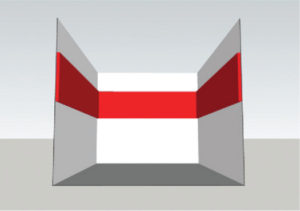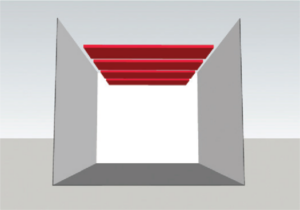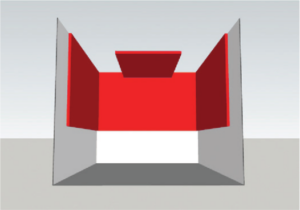Acoustic Design Guidelines
It’s so easy to deliver improved acoustic comfort. Introducing Class A absorbent material equivalent to 25% of the total wall areas will exponentially improve acoustic comfort.

A. A large-scale Acoustic Art panel on the end wall
creates a focal point; panels on the side walls create an acoustically optimal space.

B. A ribbon of Acoustic Art panels is a very effective visual treatment, especially if there is a narrative such as a timeline running around the room. The ideal positioning is in the top half of the wall space.

C. Repeating Reverb Control or Acoustic Art panels of regular size are a great way of unifying a space. Can be interspersed with dry-wipe panels.

D. As well as being fun this design is acoustically optimal. The distributed panels provide excellent reverb control and contrasting colours and textures can be introduced.

E. In meeting rooms with a plasterboard ceiling we strongly recommend the introduction of at least one ceiling raft. Can incorporate lighting to good effect.

F. Ceiling baffles are acoustically and aesthetically effective in long, narrow spaces. Best when multiple panels are suspended at the same height with equal spacing.

G. This room has been designed for videoconferencing with 50% Class A sound absorbent panels wrapping around the speech zone to reduce reverb to a minimum.